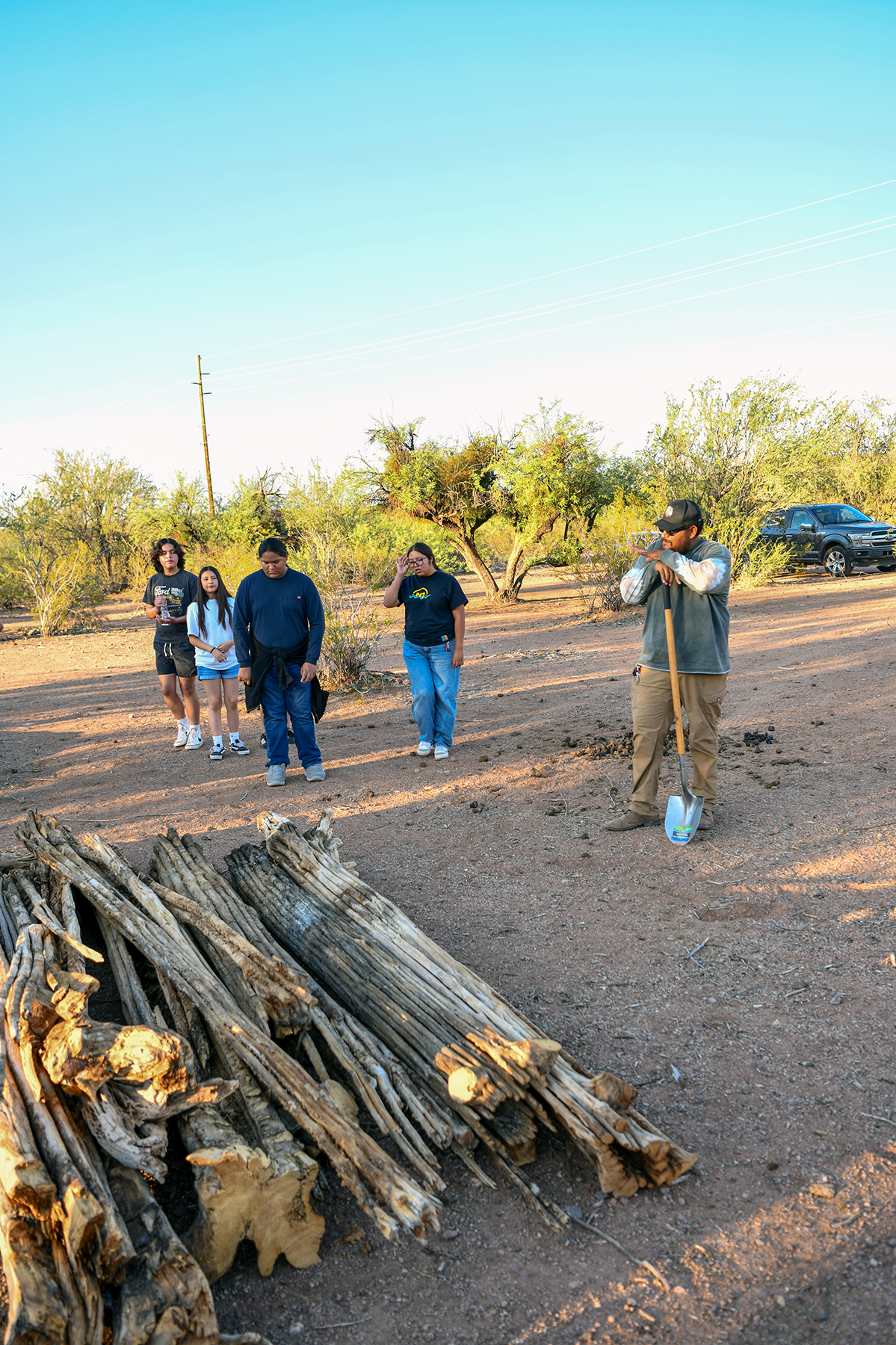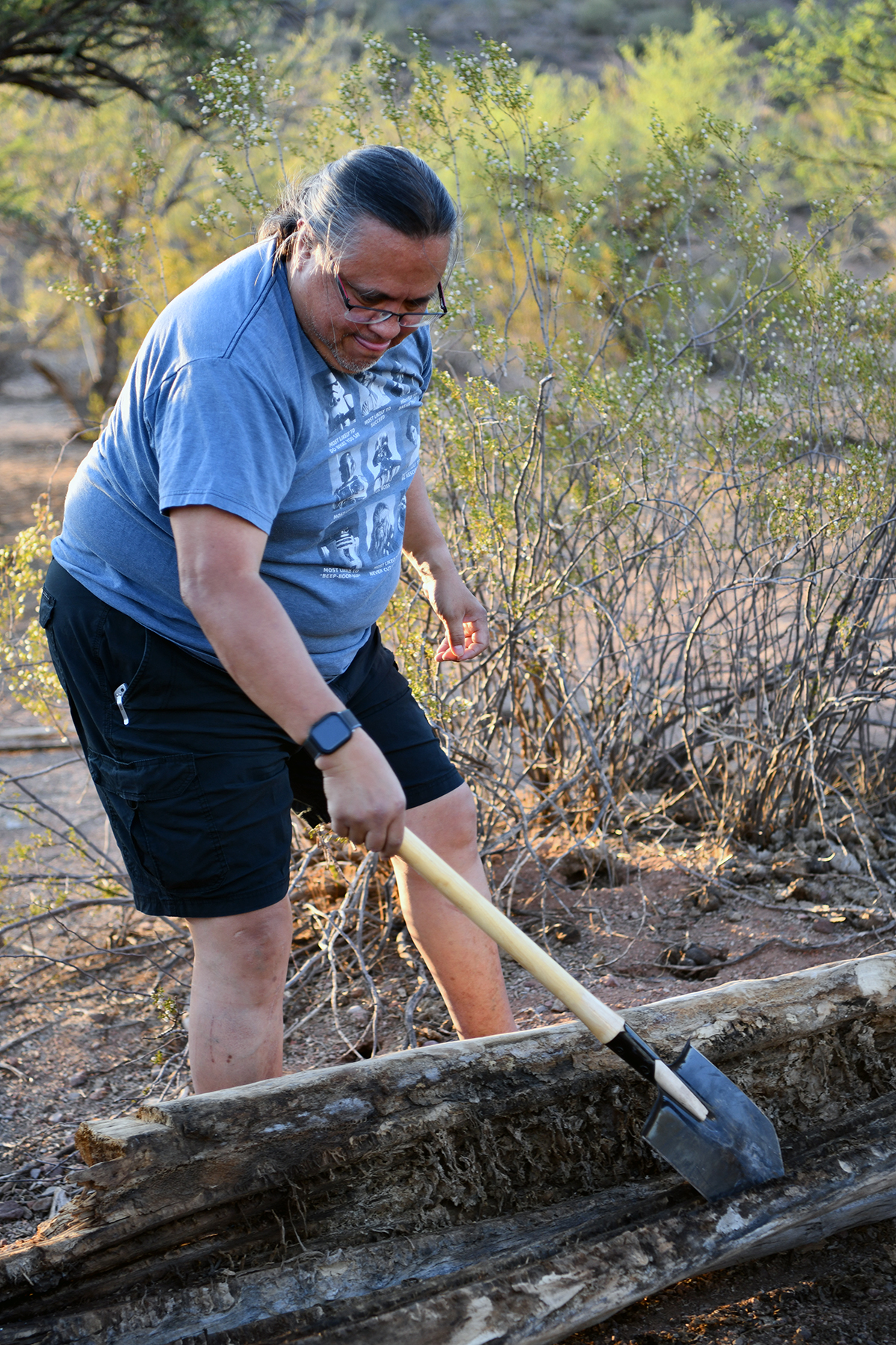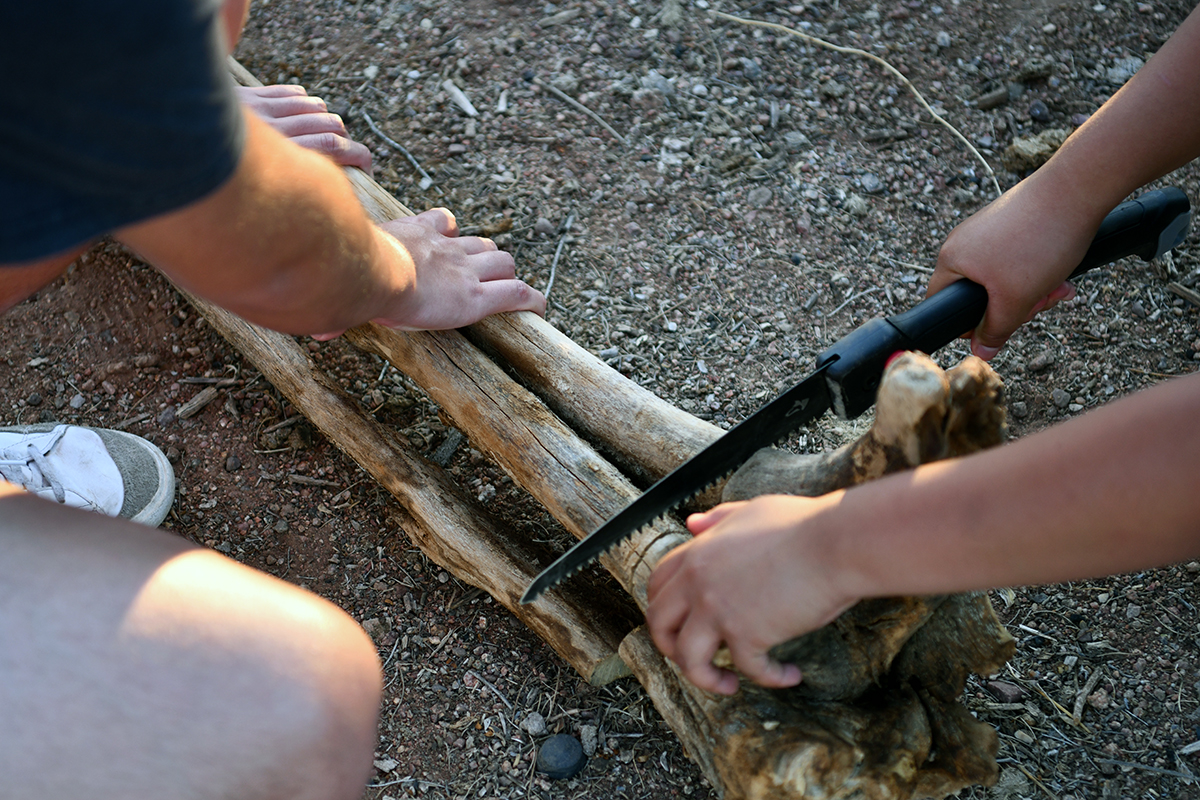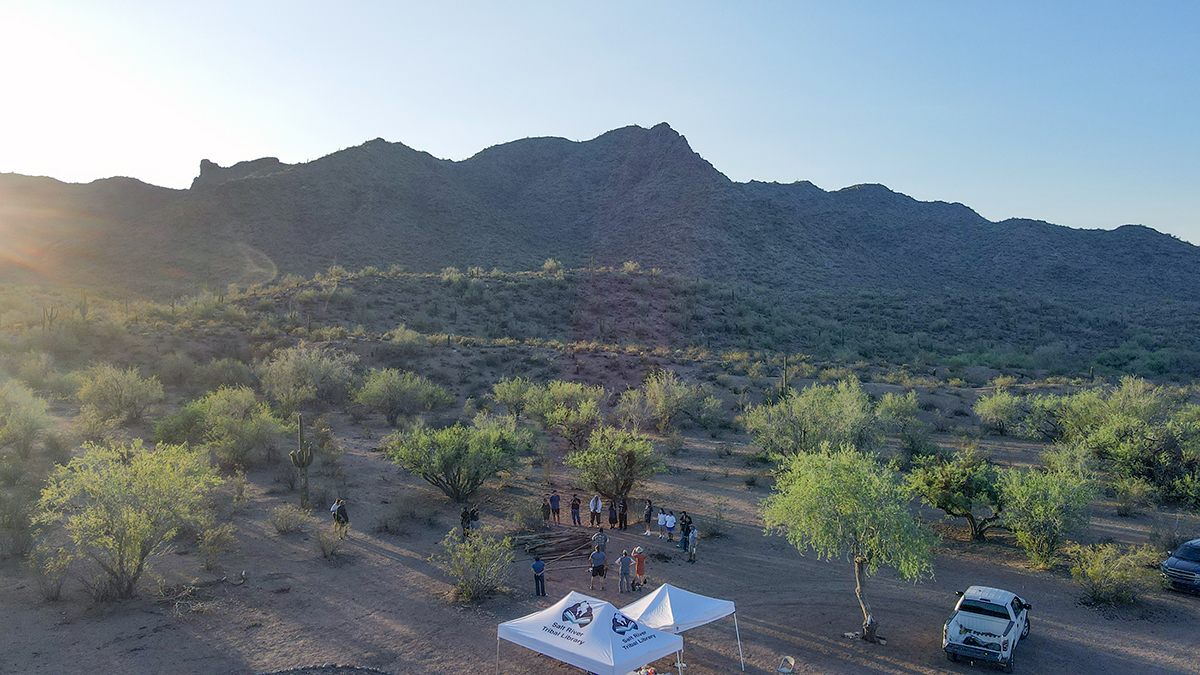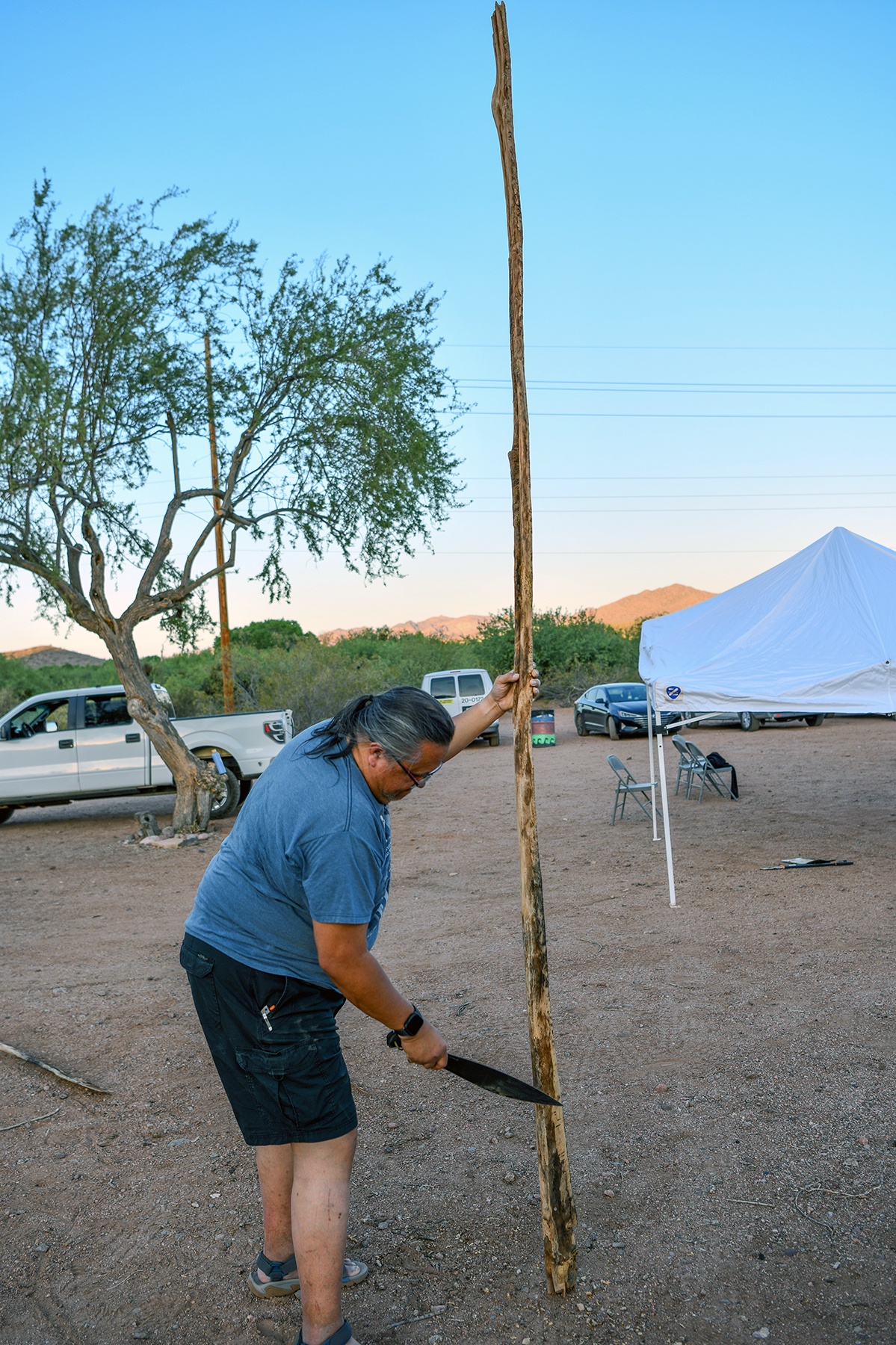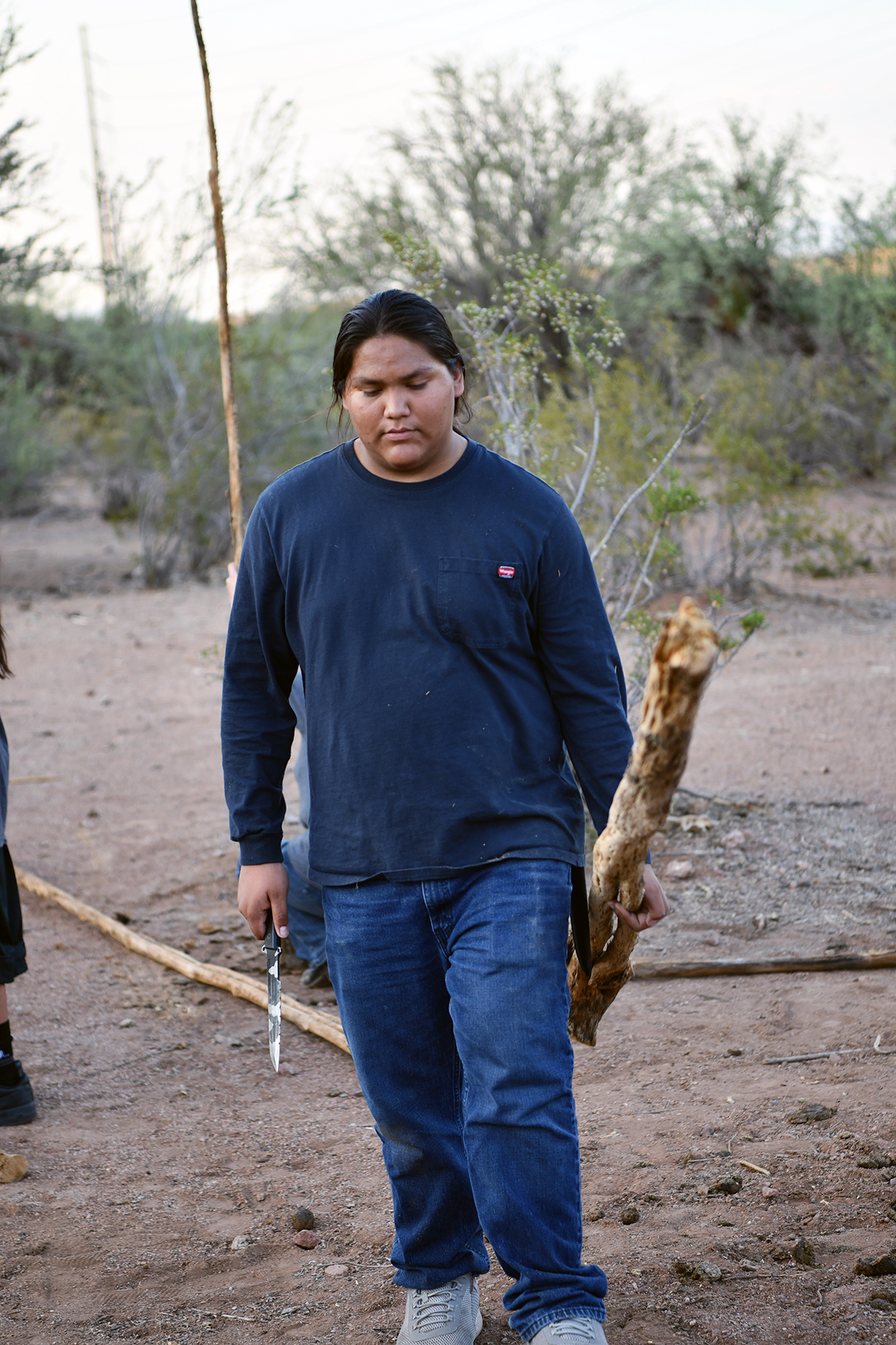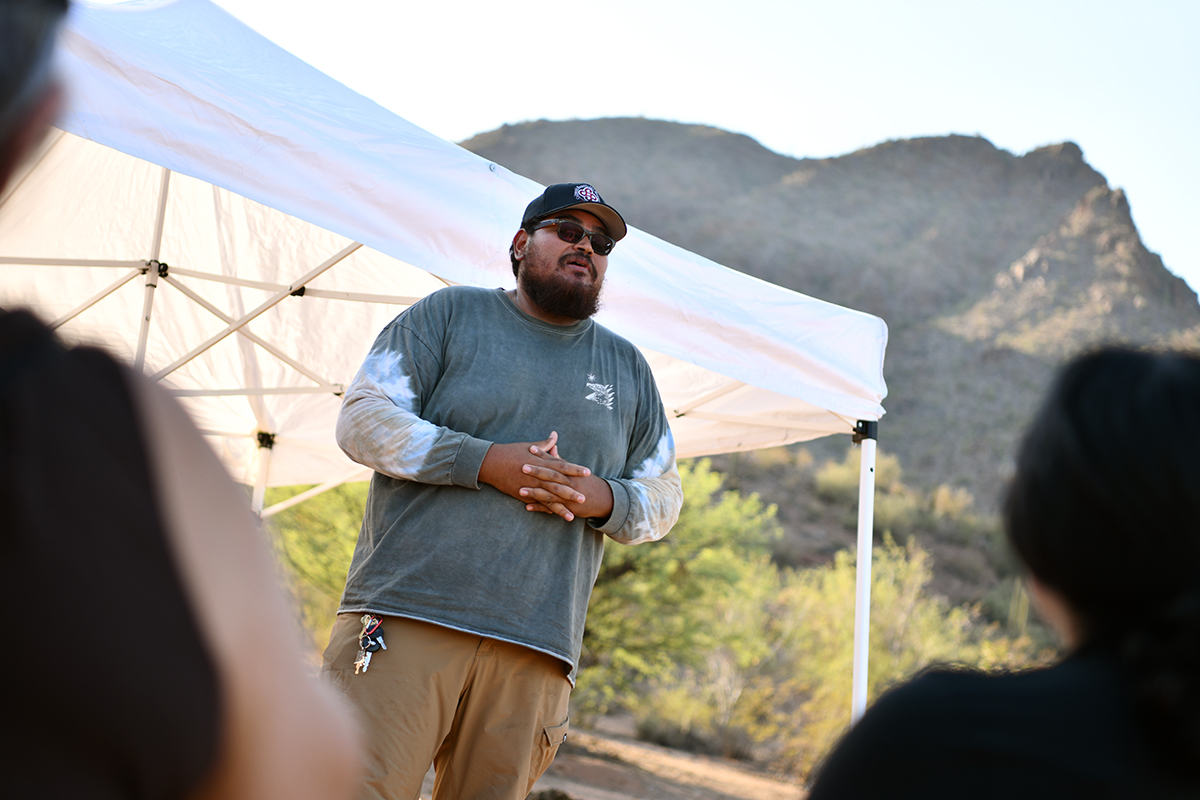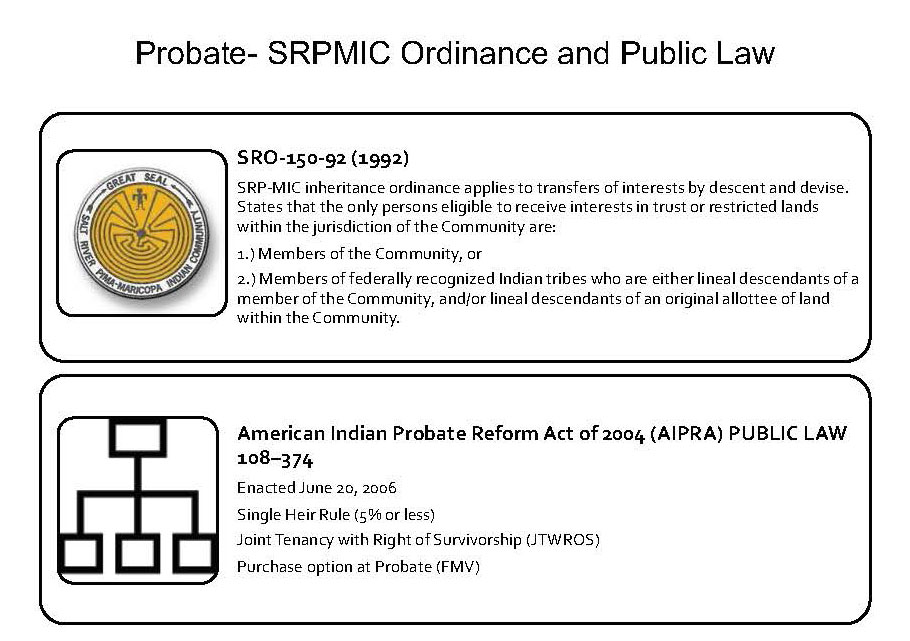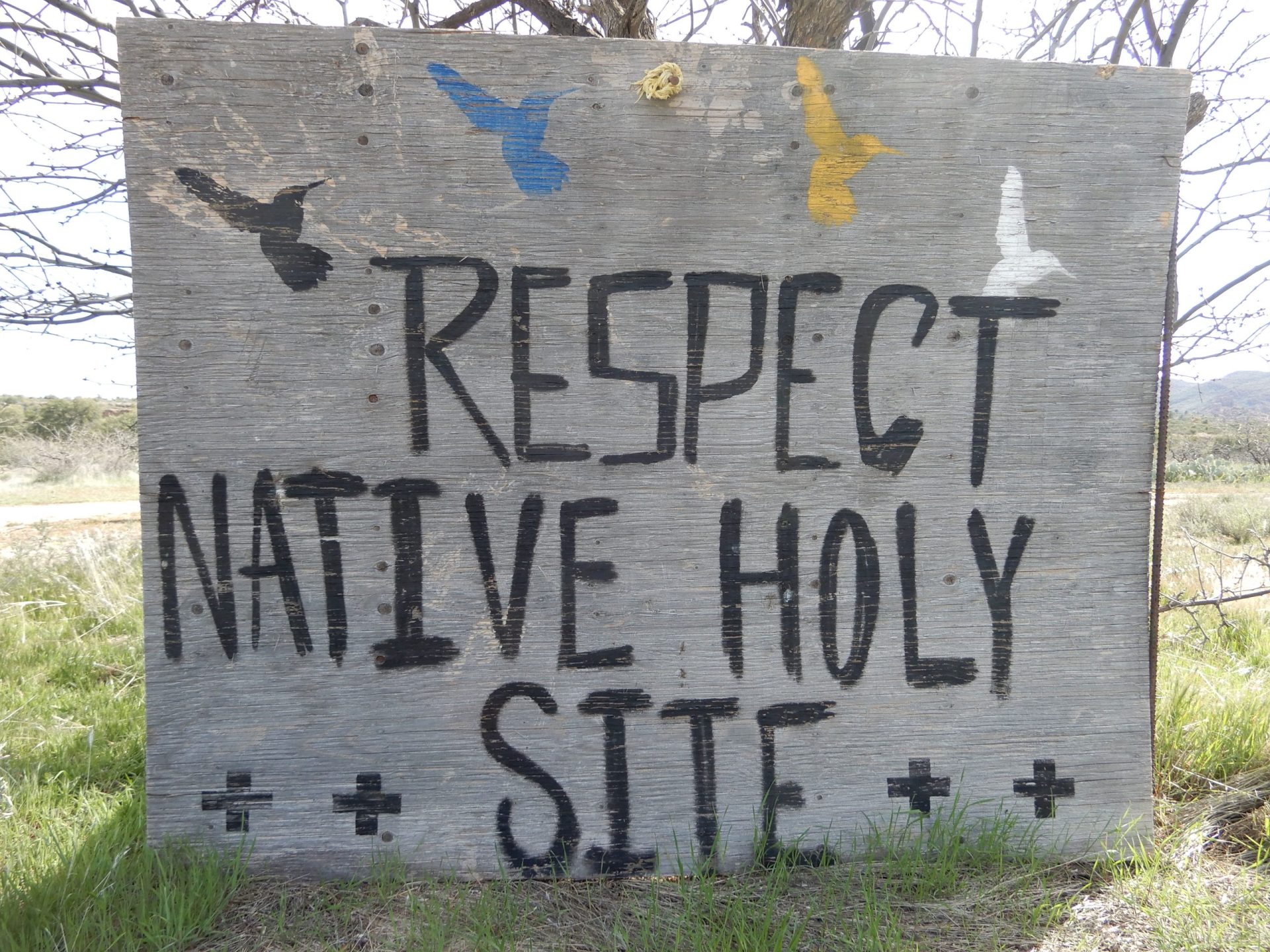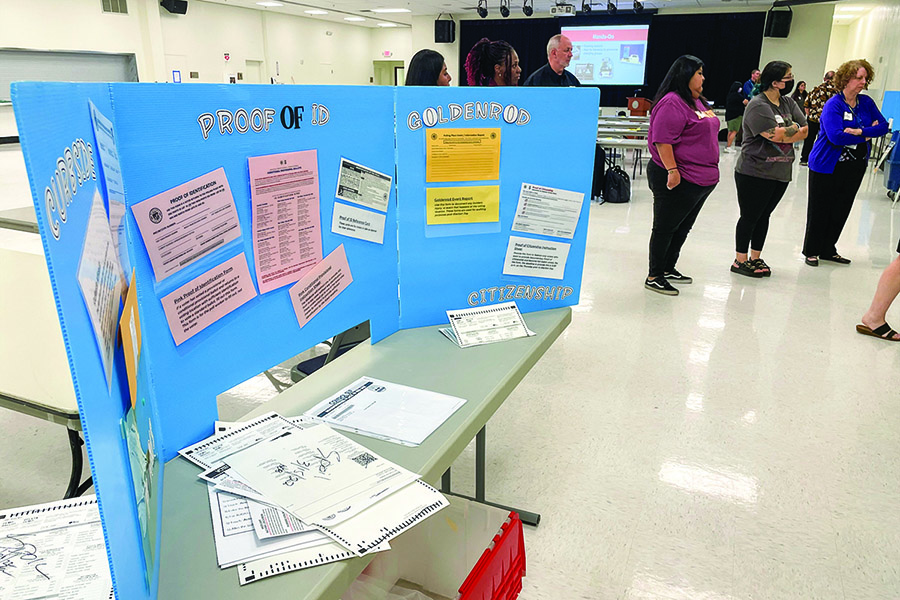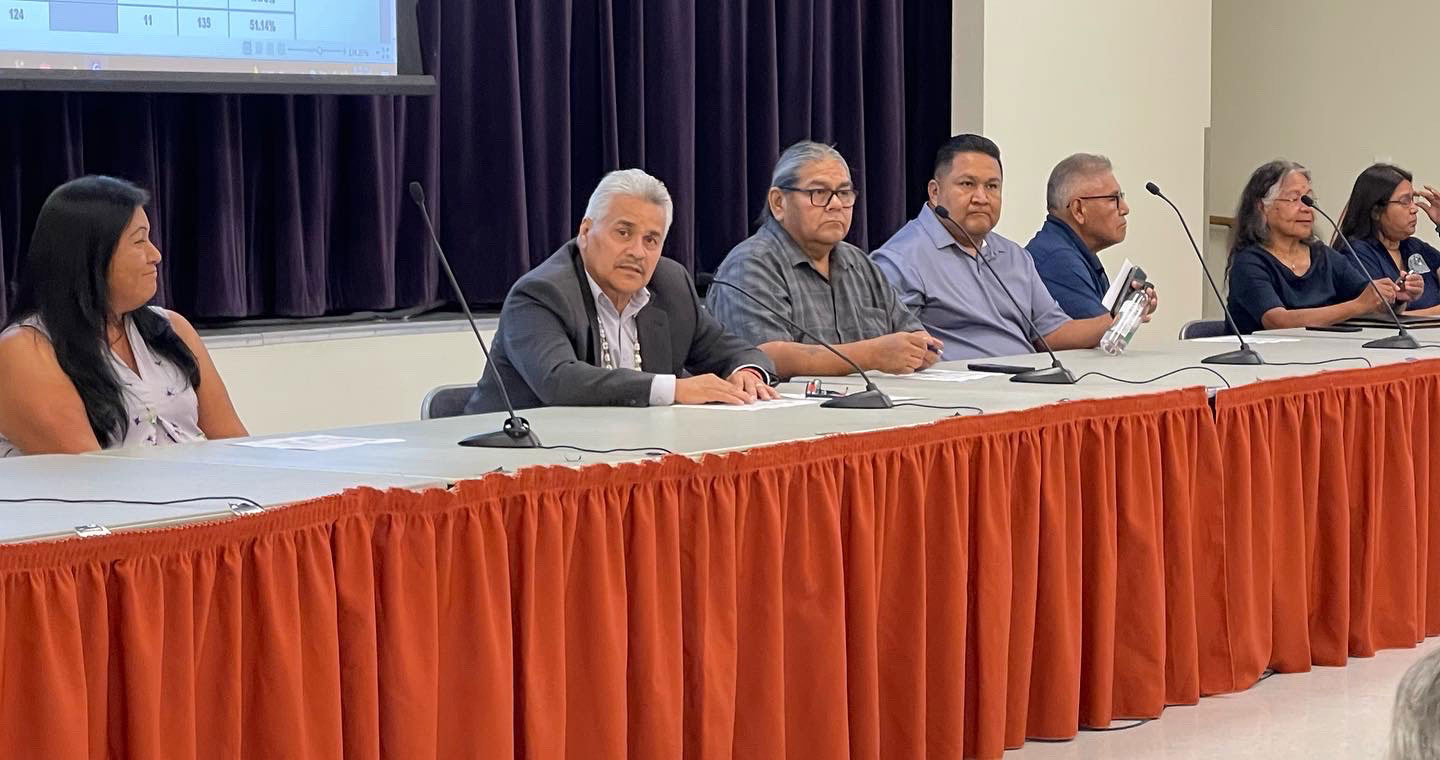VIEWS: 614
July 9, 2025Jonathon Curry Helps Facilitate Saguaro Harvesting Series
“I’m glad everybody is here,” began Salt River Pima-Maricopa Indian Community member Jonathon Curry. “It’s always been my goal to do community organizing and build community. I think we can get a lot done with that mindset of working together, sharing openly.”
On June 10, a few days before O’odham New Year, many SRPMIC members and staff joined Curry as the group ventured out to Post 6 by the Old Ranger Houses near the Fort McDowell area to embark on the annual saguaro harvesting.
The series was part of a several-day Community event hosted by the SRPMIC Tribal Library., It allowed interested individuals to join and learn more about the O’odham and Piipaash traditions. Most class attendees opted to carpool to the site in the library van..
A basecamp was set up in the Post 6 area with water, tents and chairs for all guests and presenters. They served a meal to all.
The baidaj, or the saguaro fruit, is an annual summer tradition for O’odham and Piipaash people. Every year, rainfall produces fruit atop the saguaros, which makes them perfect for consumption.
“Our songs, stories, language, we should openly share that with each other,” Curry said. “Think about it. One hundred and fifty years ago, all of the things that are extremely rare these days in terms of cultural beliefs and practices, everyone knew. Everyone understood it, everyone spoke the language, everybody sang songs.”
He added, “For O’odham people, it doesn’t matter if you’re 1% or 100%, if you’re O’odham, you’re O’odham. When you say you’re O’odham, what that essentially entails, is how you treat others. You take care of yourself and others.”
As the group reached their destination, Curry began the presentation by revealing a saguaro that had fallen and had begun to naturally decompose. “We can still use this,” shared Curry as the group started to create a kuipad, a stick made from the saguaro ribs to help pick the fruits atop a saguaro.
“Just take the skin off the base using a shovel,” he said. “It’s very soft wood, it’s easy to shave down and work it. I use it to make gourd handles.”
The group began to break apart pieces of the saguaro, using shovels to break apart the ribs and skin, blades to remove any broken pieces and wire ribbon to tie the sticks together.
“I’m here to openly share what I know. I want to see these [traditions] normalized,” Curry told the group. “The goal is to take it back and bring it to all of us.”
The group worked as one collective team to create kuipads as many SRPMIC members helped the staff who were in attendance on their own.
As the group completed making their kuipads, Curry shared a social song, “The Ant Song,” to commemorate the outing.
The group will embark on more saguaro fruit harvesting in the early morning of July 5 and 6. To help ensure everyone’s safety during the July weekend trip, Curry suggested individuals get acclimated to the summer sun now and begin hydrating days before the trip.
“Once the saguaro starts fruiting, as a traditional way of practicing sustainability, in O’odham belief, that first fruits, those are for the animals—The doves, bats, and woodpeckers. When the fruit falls, it feeds the kangaroo rats and whatever it may be. This is further enforced in the stories of creation.” ”
“We’re not the only ones that live off this food,” finished Curry. “We’re just a factor of that in this world.”
